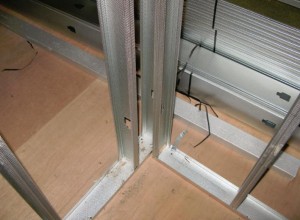 A client of mine has a business here in Central New York and owns a building adjacent to the main location. The space was unoccupied for some time and my client had a prospective tenant in mind.
A client of mine has a business here in Central New York and owns a building adjacent to the main location. The space was unoccupied for some time and my client had a prospective tenant in mind.
The tenant owned a natural food store and within the store was a small kitchen. This seemed like a good fit for the building and the neighborhood. And all indications were that she would be a responsible tenant. The thing is, she also would do some cooking on the premises. It was a small amount, preparing food for sale and serving customers light lunch.
The Codes Enforcement Officer for the municipality told my client that their prospective tenant was considered a restaurant occupancy and the building would have to meet the New York State Building and Fire codes as such.
This meant my client would have had to take down an existing ceiling and install a 1 or 2 hour Fire Rated Ceiling to separate the first floor space from the second floor space. The ductwork would also be required to come down to install the appropriate 1-2 layers of gypsum board to achieve the fire separation rating.
The cost for all this would have been upwards of $40,000. I suggested to my client that I would call the codes officer and get together as soon as possible to discuss the proposed occupancy. Here’s how the codes officer and I put the building “under a microscope” and came up with an alternative solution that saved the owner thousands of dollars while insuring that the New York State Building Code was met for the new business.
Initially, my client was going to use the second floor as a storage space. However, after some additional discussions, he was hoping to rent the second floor as business space. This conversation really helped with re-classifying the building.
After some in-depth research into the New York State Building Code, we found that if the entire building could be classified as a business occupancy, the fire separation could be removed in this specific case. This also meant that incidental cooking could be done without reclassifying the building as a restaurant.
In this specific case, because of the size of the kitchen area, incidental cooking was allowed in a Business Occupancy and no expensive renovation was required by the New York State Building Code. The current ceiling was now fine and complied.
The upshot is that with a little research and the architect and Codes Enforcement Officer working together as a team we were able to solve a problem that may have meant some very expensive renovations and possible loss of a local business.
With an in-depth discussion between you and your architect about ALL your plans (current and future) for a building project, your architect can better assist you to design a cost effective space while adhering to the New York State Building Code.
If you’re thinking of renovating or buying a commercial building and are concerned with how the Building Codes or Zoning will impact your project, give me a call and I will be happy to assist. Let me put your project under a “microscope” and help you make the right life safety and money saving decisions.
Until next time,
Dan Berkhoudt, Architect
Other helpful posts on smart use of building codes:
Building Codes are Boss with Your New Construction or Renovation
How You Can Take Advantage of Building Codes
FREE Money Saving Advice From Your Codes Enforcement Officer & Other Local Agencies
Dan Berkhoudt, AIA, LEED-AP is an experienced architect working in Utica, Rome, and Central New York. He specializes in new building construction and renovation both commercial and residential. Call 315.737.4416 or contact him here.




Leave a Comment